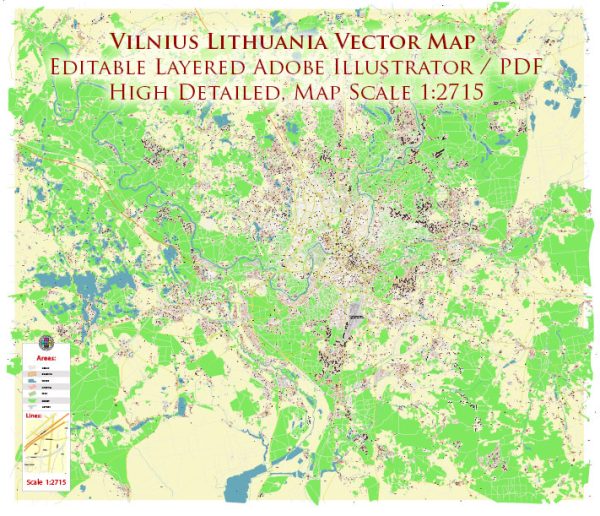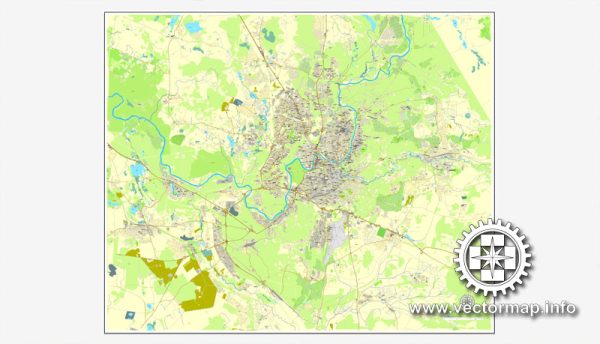Vilnius, the capital city of Lithuania, has a rich history that spans many centuries, reflecting its strategic location, cultural influences, and changing political landscapes. Here is an overview of key phases in the history of Vilnius’s urban development:
Early History:
- Medieval Origins (14th Century):
- Vilnius traces its roots back to the 14th century when Grand Duke Gediminas founded the city. The location, situated at the confluence of the Neris and Vilnia rivers, made it a strategic center for trade and defense.
- Jagiellonian Era (15th Century):
- During the Jagiellonian dynasty, Vilnius became the capital of the Grand Duchy of Lithuania and a significant cultural and political center in the region. The city’s growth was fueled by trade, the establishment of the Vilnius University in 1579, and its multicultural population.
Polish-Lithuanian Commonwealth:
- Baroque Splendor (16th – 18th Centuries):
- The city experienced a period of Baroque splendor with the construction of numerous churches, palaces, and public buildings. Architects like Giovanni Battista Frediani and sculptors such as Pietro Perti contributed to the city’s architectural richness.
- Multicultural Hub:
- Vilnius became known for its tolerance and multiculturalism, with communities of Poles, Lithuanians, Jews, and other ethnic groups coexisting. The city’s Old Town, a UNESCO World Heritage site, reflects this diverse cultural heritage.
Russian Empire and Interwar Period:
- Partitions of Poland (Late 18th Century):
- Vilnius, along with the rest of the Polish-Lithuanian Commonwealth, was partitioned among Russia, Prussia, and Austria at the end of the 18th century. It became a part of the Russian Empire.
- Revival in the 19th Century:
- The 19th century saw efforts to revive Lithuanian culture and language. The emergence of the national awakening contributed to a renewed sense of identity in Vilnius.
- Independent Lithuania (1918-1940):
- After World War I, Vilnius became the capital of the newly established Republic of Lithuania. The city underwent modernization, and new neighborhoods were developed to accommodate the growing population.
Soviet Era and Independence:
- Soviet Occupation (1940-1941, 1944-1990):
- Vilnius, like the rest of Lithuania, experienced Soviet occupation during and after World War II. The city’s urban development during this period often reflected Soviet architectural styles, including standardized apartment blocks.
- Restoration of Independence (1990):
- Lithuania declared its independence from the Soviet Union in 1990, leading to a period of transition. The restoration of independence allowed Vilnius to reclaim its role as the capital of a sovereign Lithuania.
Contemporary Vilnius:
- European Capital (21st Century):
- Vilnius has embraced its role as the capital of a European nation. The city joined the European Union in 2004, and efforts have been made to integrate with European urban development standards.
- Preservation and Renewal:
- The Old Town of Vilnius remains a vibrant cultural and historical center, with efforts to preserve its medieval and Baroque architecture. Meanwhile, new developments and urban renewal projects contribute to the city’s modern identity.
- Cultural Hub:
- Vilnius is known for its cultural events, festivals, and artistic community. The city has a thriving arts scene, with galleries, theaters, and cultural institutions contributing to its dynamic atmosphere.
- Green Spaces and Sustainability:
- Vilnius places a strong emphasis on green spaces and environmental sustainability. Parks, such as Vingis Park and Bernardinai Gardens, provide residents and visitors with recreational areas.
Vilnius’s urban development encapsulates a journey through medieval grandeur, multicultural coexistence, periods of occupation, and the challenges and opportunities of independence. Today, the city stands as a blend of historical charm, modern architecture, and a vibrant cultural scene.



 Author: Kirill Shrayber, Ph.D.
Author: Kirill Shrayber, Ph.D.